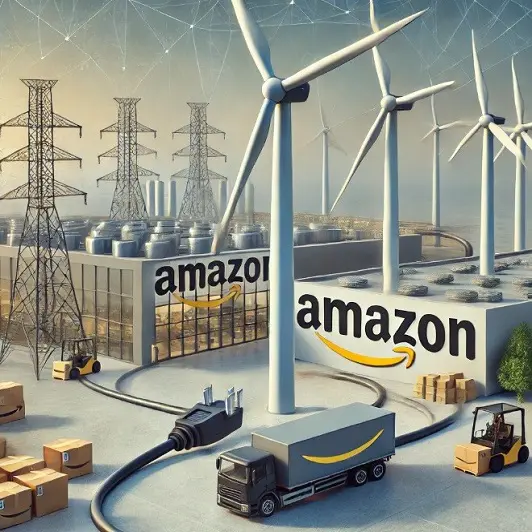Amazon recently boasted reaching its 100 per cent renewable energy goal seven years earlier than the 2030 goal. However, with Microsoft and Google disclosing an increase in greenhouse gasses due to infrastructure expansion, we look at whether the prospects of hyperscalers actually hitting their renewable energy targets (and carbon reduction targets) are realistic.
Amazon Hits Target Seven Years Early
Amazon announced that it had achieved its goal of matching all the electricity consumed by its global operations with 100 per cent renewable energy, seven years ahead of the original 2030 target. Given that Amazon’s AWS is the largest cloud provider globally, holding 31 per cent share of the global cloud infrastructure market, and is one of the key “hyperscalers”, along with Microsoft (Azure) and Google (Cloud Platform – GCP), it sounds like an amazing feat.
Amazon’s milestone towards sustainability includes all its data centres (more than 100 in 24 regions globally) corporate buildings, fulfillment centers, and physical stores.
How?
The company attributes this hugely accelerated achievement to its significant investments in over 500 solar and wind projects across 27 countries, which have been capable of generating enough energy to power the equivalent of 21.9 million EU homes. Amazon has become the largest corporate purchaser of renewable energy for four consecutive years, investing billions of dollars in renewable energy projects globally. Such projects not only help reduce carbon emissions but also contribute to economic growth in the communities where they are developed.
What Was The Target?
The target that Amazon claims to have hit (surprisingly) was its goal to match all electricity consumed across its operations by 2030. Amazon has also committed to The Climate Pledge, which aims to reach net-zero carbon emissions by 2040.
Nuclear War
However, Amazon’s $650 million deal made back in March whereby AWS acquired Talen Energy’s data centre campus, right next to the 2.5-gigawatt Susquehanna nuclear power station in Pennsylvania (intended to meet the growing AI power requirements) has hit a (temporary) wall. Protests from American Electric Power (AEP) and Exelon have been lodged with the Federal Energy Regulatory Commission (FERC). These companies are essentially arguing that the interconnection service agreement (ISA) between Talen and AWS could allow the data-centre to benefit from the transmission system without paying the appropriate fees – a potential cost shift of up to $140 million per year. They argue that this would unfairly impact other ratepayers. They have also highlighted issues with grid availability.
Talen, however, argues that the consortium’s claims are false and has urged ERC to ignore the consortium’s request for a hearing.
Microsoft And Google’s GHG Emissions Up
Although Amazon is busy claiming success in terms of renewable energy sustainability goals, reports showing an increase in GHG emissions from two other hyperscalers, Microsoft and Google are casting doubts on whether their carbon reduction commitments can be reached. For example, Microsoft’s 2024 Environmental sustainability report (May 2024) showed that its GHG emissions for 2023 were 29.1 higher than its 2020 baseline, calling into question whether it will hit its pledge to become carbon-negative by 2030. The company blamed the rise on the construction of more data-centres and the associated carbon in the building materials.
Similarly, Google’s 2024 Environmental report showed that an increase in data-centre energy consumption in 2023 led to its 2023 GHG emissions being up by 13 per cent on the previous year. Google has blamed the increased consumption on the rapid advancements on AI.
How Do Renewable Energy Project Investments Help The Hyperscalers Reduce Their Carbon Emissions And Hit Targets?
Investments in solar and wind projects by hyperscalers like those from AWS, not only help them to become more sustainable with their energy requirements but can help also help them to achieve carbon emission reduction targets in a number of ways. These include:
– Direct emission reductions. Replacing fossil fuels with renewable energy directly cuts carbon emissions, powering operations with carbon-free sources.
– Energy efficiency. Projects include energy storage and advanced management systems, optimising use and ensuring reliable power for data centres.
– Economic and environmental benefits. Renewable energy investments can create jobs, foster technological advancements, and reduce environmental impacts from traditional energy production.
– Industry influence. The commitment of the hyperscalers to renewables can also help drive broader adoption and influences other companies to follow suit.
– Complementary technologies. Investments in battery storage, AI for energy management, and grid optimisation also enhance renewable energy integration.
Investments in renewable energy projects, such as those by AWS are, therefore, a way to focus on direct emission reductions rather than compensating for emissions through external projects (not just carbon offsetting), lowering operational carbon intensity and hopefully contributing to a sustainable future.
What About Putting Nuclear Power Stations Next To Data Centres?
Nuclear power may be a low-carbon energy source, with significant benefits for reducing greenhouse gas emissions but it is not technically classified as ‘renewable energy’. This is because of its reliance on finite fuel resources and the environmental challenges associated with radioactive waste management. In this sense, it can’t be seen as contributing to the sustainability targets of AWS, and whether nuclear power is ‘sustainable’ is a more nuanced subject.
However, in terms of how/whether having a nuclear power station next to a data-centre can help meet the huge demand that technology such as AI is creating while also minimising carbon emissions, the facts are that nuclear power generates electricity without emitting carbon dioxide during operation. Therefore, as is the idea (currently being contested) of the Talen Energy data-centre campus project, by powering a data-centre with nuclear energy, a hyperscaler can dramatically reduce its carbon footprint compared to relying on fossil fuels as well as meeting the high and constant power demands of the data-centre.
The Challenge
However, as identified by Amazon’s chief sustainability officer, Kara Hurst, when announcing hitting its 100 per cent renewable energy target seven years early, “We also know that this is just a moment in time, and our work to decarbonise our operations will not always be the same each year – we’ll continue to make progress, while also constantly evolving on our path to 2040”. The challenge identified here is how, with rising demand for data-centres (fuelled by a rapidly growing AI), Amazon can stay sustainable and have enough renewable energy to do so, not to mention keeping a close eye on all carbon emission targets.
Hurst has acknowledged that in order for AWS to do so, it will need to keep investing in more solar and wind projects, “while also supporting other forms of carbon-free energy, like nuclear, battery storage, and emerging technologies” to help power its operations in the right ways in the coming decades.
In the case of Google’s GHG emissions rising last year, it has also acknowledged the challenge of trying to reduce emissions while compute intensity increases, and technical infrastructure investment needs to grow to support the AI transition.
How Realistic Is The 100 Per Cent Renewable Energy Target?
In terms of how realistic achieving 100 per cent renewable energy all the time is, the answer is that this is a challenging goal for the hyperscalers due to the inherent intermittency and variability of renewable sources like solar and wind. While Amazon has apparently successfully matched its electricity consumption with renewable energy through its significant solar and wind project investments, this achievement doesn’t necessarily mean that renewable energy is continuously supplying their power needs at every moment. Instead, they’re likely to be matching their overall energy use over time with renewable energy generation, relying on energy storage and grid integration to balance supply and demand.
The challenges become more pronounced with the rapid growth of data-centres and emerging technologies like AI, which demand constant and reliable power. Hyperscalers may need to complement renewable energy with other low-carbon sources, such as nuclear power, to ensure a stable energy supply. Nuclear power, for example, provides a steady base load of electricity (without carbon emissions), but it is not really renewable energy. Therefore, while 100 per cent renewable energy all the time is an aspirational goal, achieving it realistically will require a diversified energy mix, incorporating renewables, nuclear, and other advanced technologies to ensure both sustainability and reliability.
What Does This Mean For Your Organisation?
Amazon’s achievement of reaching 100 per cent renewable energy seven years ahead of its target sets a high benchmark for other hyperscalers and demonstrates the potential impact of significant investments in renewable energy. Amazon’s accomplishment also shows that ambitious renewable energy goals can be attainable with substantial investment and strategic planning. However, the rapid expansion of infrastructure to meet the growing demand for AI and data services poses significant challenges. Microsoft and Google’s recent increases in greenhouse gas emissions highlight the difficulties in balancing expansion with sustainability.
Amazon’s achievement of reaching 100 per cent renewable energy seven years ahead of its target sets a high benchmark for hyperscalers and demonstrates the potential impact of significant investments in renewable energy. For hyperscalers, this accomplishment shows that ambitious renewable energy goals can be attainable with substantial investment and strategic planning. However, the rapid expansion of infrastructure to meet the growing demand for AI and data services poses significant challenges. Microsoft and Google’s recent increases in greenhouse gas emissions highlight the difficulties in balancing expansion with sustainability.
Achieving continuous 100 per cent renewable energy remains a complex challenge due to the intermittent nature of solar and wind power. For your organisation, this evolving energy landscape means it may be crucial to align with partners who are committed to sustainability and are proactively investing in innovative energy solutions.


